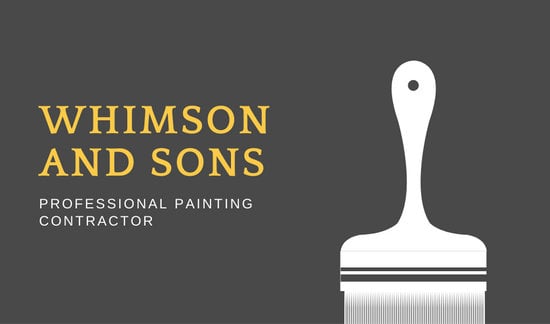Discover Just How Seasonal Elements Influence Industrial Exterior Painting Success And Uncover The Best Times To Ensure Long Lasting Outcomes For Your Task
Discover Just How Seasonal Elements Influence Industrial Exterior Painting Success And Uncover The Best Times To Ensure Long Lasting Outcomes For Your Task
Blog Article
Web Content Writer-Regan Urquhart
When you're planning a commercial external painting job, seasonal variables can make or break your outcomes. You'll wish to think about just how temperature and moisture effect paint application and drying times. Selecting the right period can guarantee your paint sticks correctly and lasts much longer. Yet which periods are genuinely the very best for this type of work? Let's explore the key elements that can influence your project's success.
The Effect of Temperature on Paint Application
When you're preparing a business exterior paint job, the temperature level can significantly influence how well the paint adheres and dries.
Ideally, you wish to repaint when temperature levels range between 50 ° F and 85 ° F. If it's as well cool, the paint may not cure properly, leading to problems like peeling off or breaking.
On the flip side, if it's as well hot, the paint can dry also rapidly, avoiding proper attachment and resulting in an irregular finish.
You need to also consider the time of day; morning or late afternoon provides cooler temperature levels, which can be more desirable.
Constantly check the supplier's recommendations for the certain paint you're using, as they commonly provide support on the excellent temperature variety for optimal results.
Moisture and Its Impact on Drying Times
Temperature isn't the only environmental variable that affects your business exterior paint job; moisture plays a substantial role also. learn more can slow down drying out times significantly, influencing the overall high quality of your paint task.
When the air is saturated with dampness, the paint takes longer to cure, which can result in issues like inadequate bond and a greater risk of mold growth. If you're painting on a specifically humid day, be planned for extended delay times in between coats.
It's important to monitor neighborhood climate condition and strategy as necessary. Preferably, aim for humidity levels between 40% and 70% for optimal drying.
Maintaining these consider mind ensures your job remains on track and provides a lasting finish.
Best Seasons for Commercial Exterior Paint Projects
What's the most effective time of year for your industrial external paint tasks?
mouse click the following web page and early autumn are typically your best choices. During these periods, temperature levels are moderate, and humidity levels are usually lower, creating perfect problems for paint application and drying out.
Prevent summer's intense heat, which can cause paint to dry too quickly, leading to poor attachment and surface. Similarly, winter's cool temperature levels can impede correct drying and curing, taking the chance of the long life of your paint work.
Go for days with temperature levels between 50 ° F and 85 ° F for optimal outcomes. Keep in mind to check the neighborhood weather report for rainfall, as wet problems can wreck your task.
Planning around these variables guarantees your painting job runs smoothly and lasts much longer.
Verdict
To conclude, preparing your commercial exterior paint projects around seasonal factors to consider can make a significant difference in the outcome. By scheduling work throughout the optimal temperatures and humidity levels, you'll ensure better adhesion and drying times. Keep in mind to keep an eye on local weather forecasts and select the correct time of year-- springtime and early fall are your best bets. Taking these actions will assist you accomplish a sturdy and expert coating that lasts.
